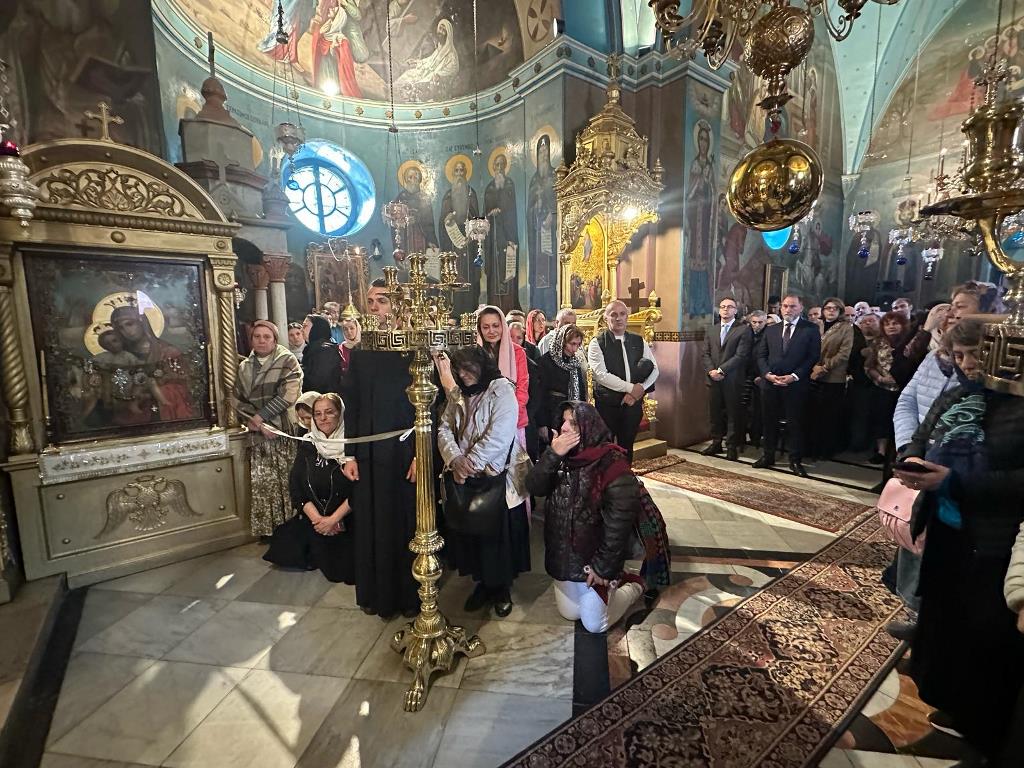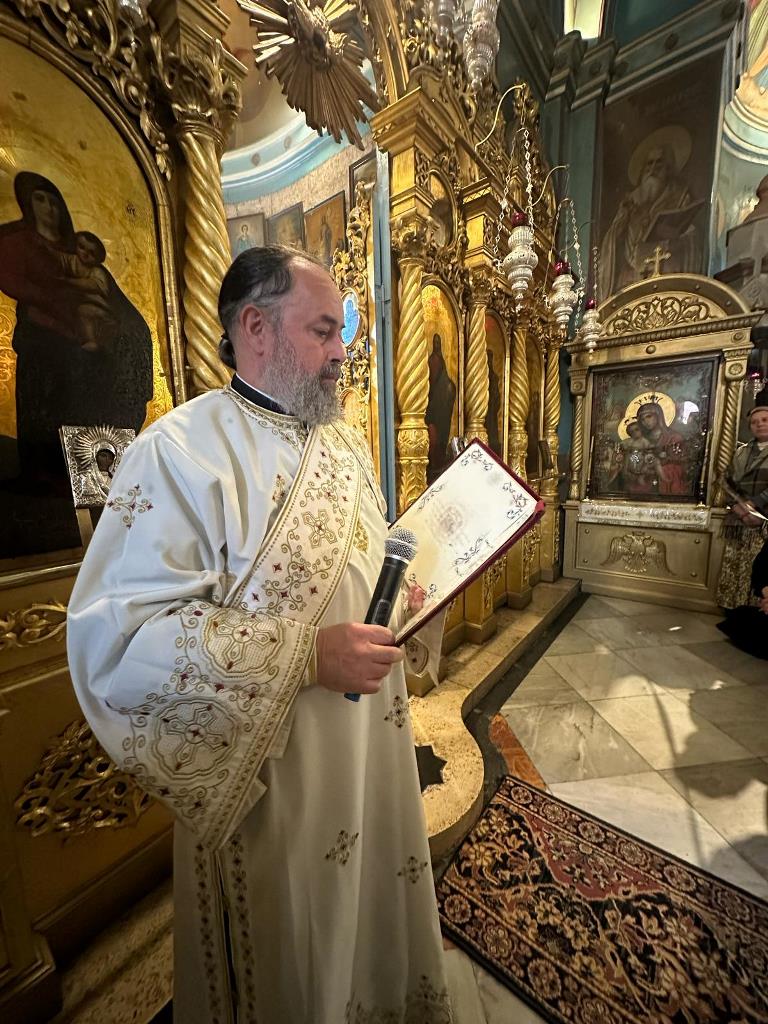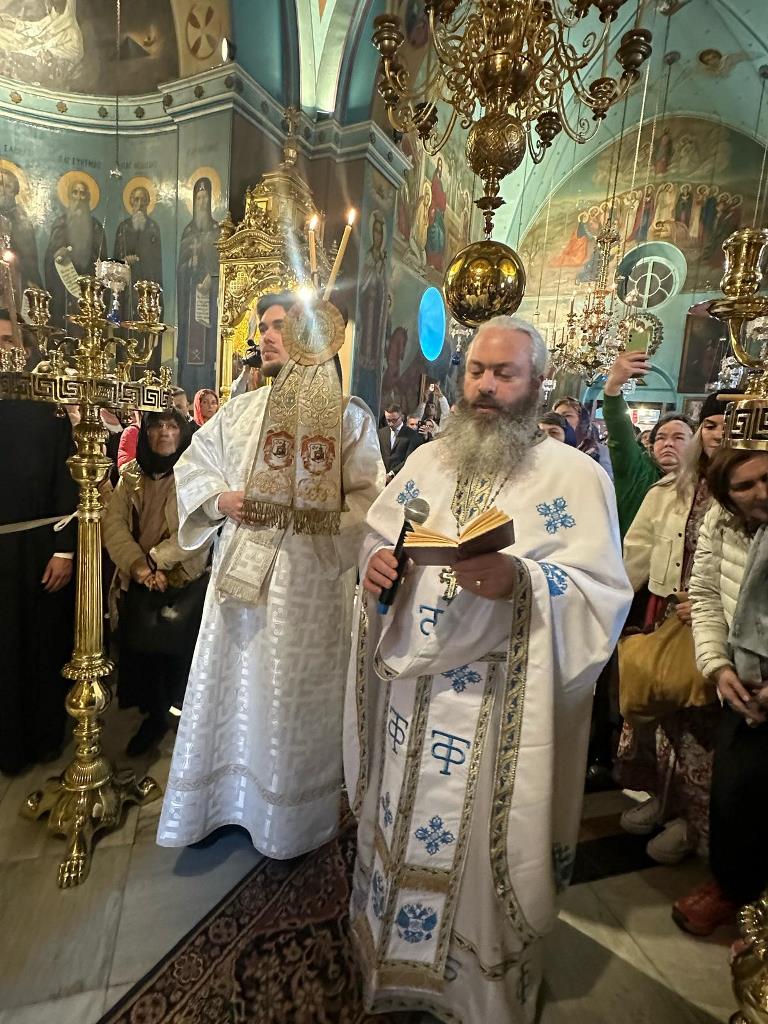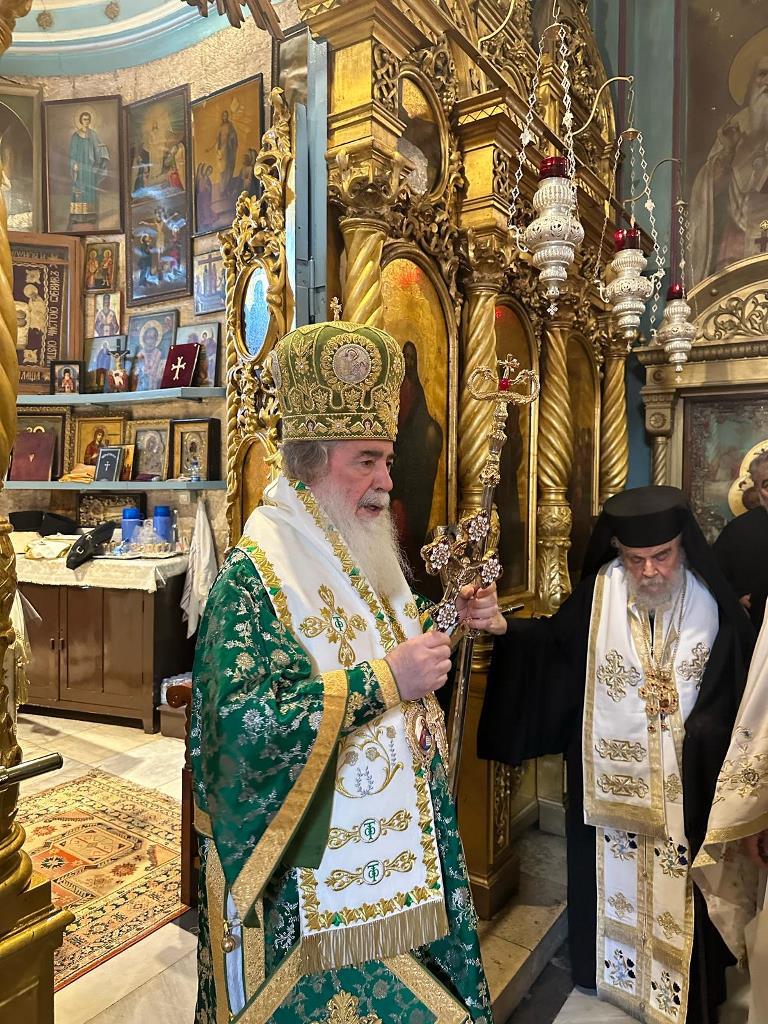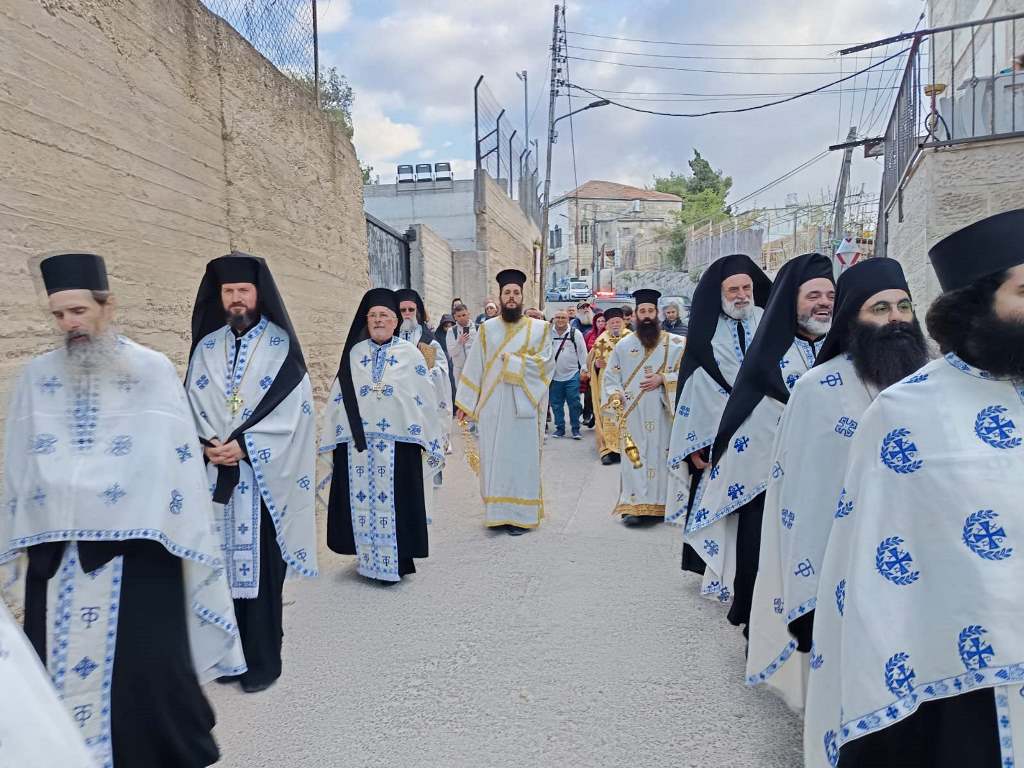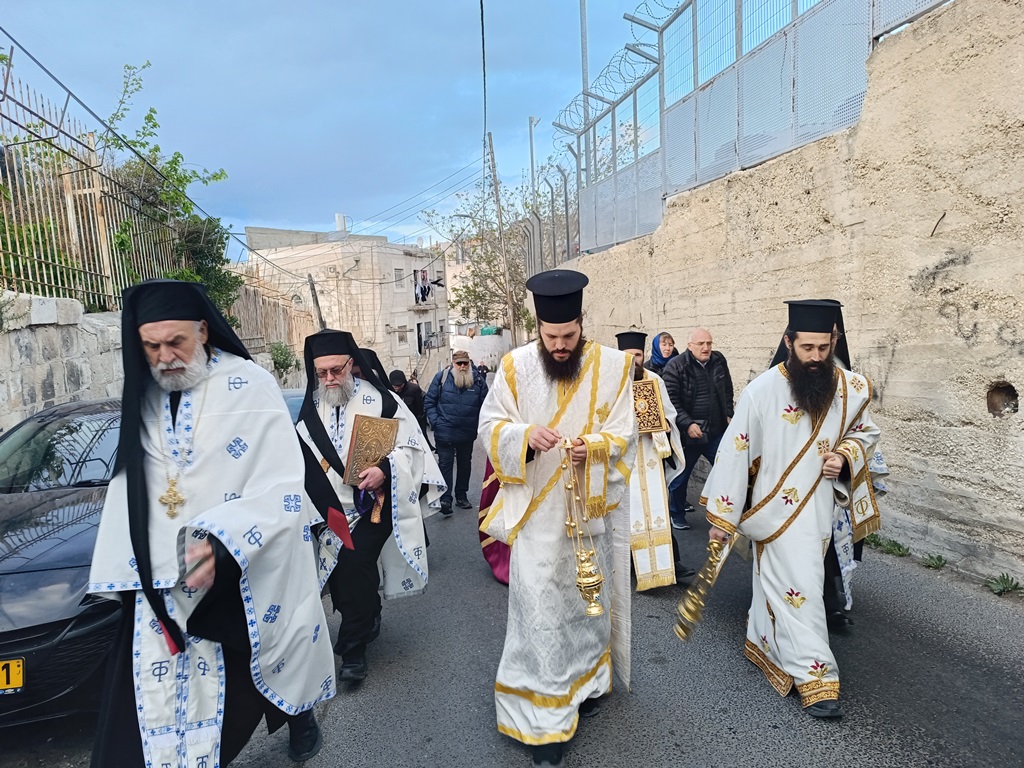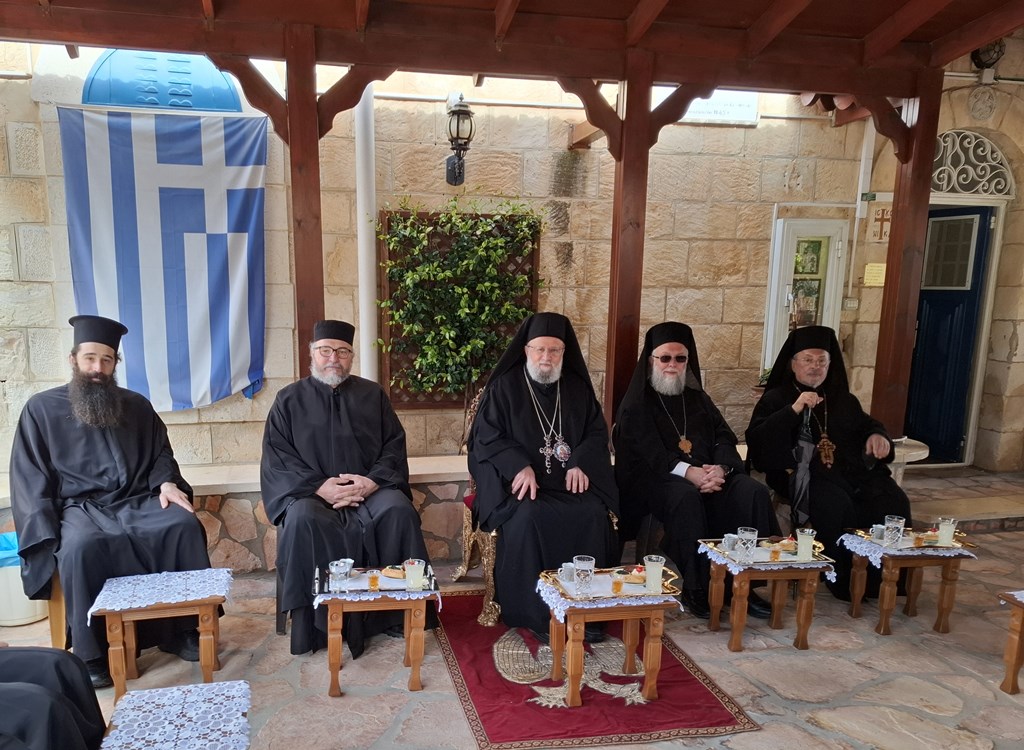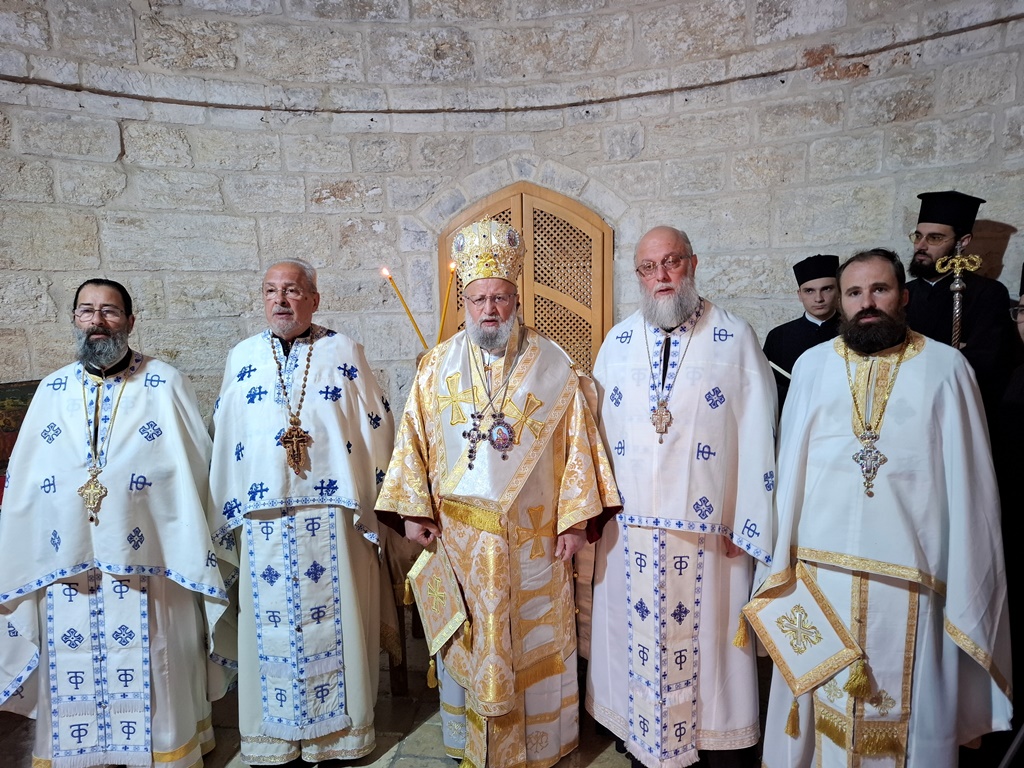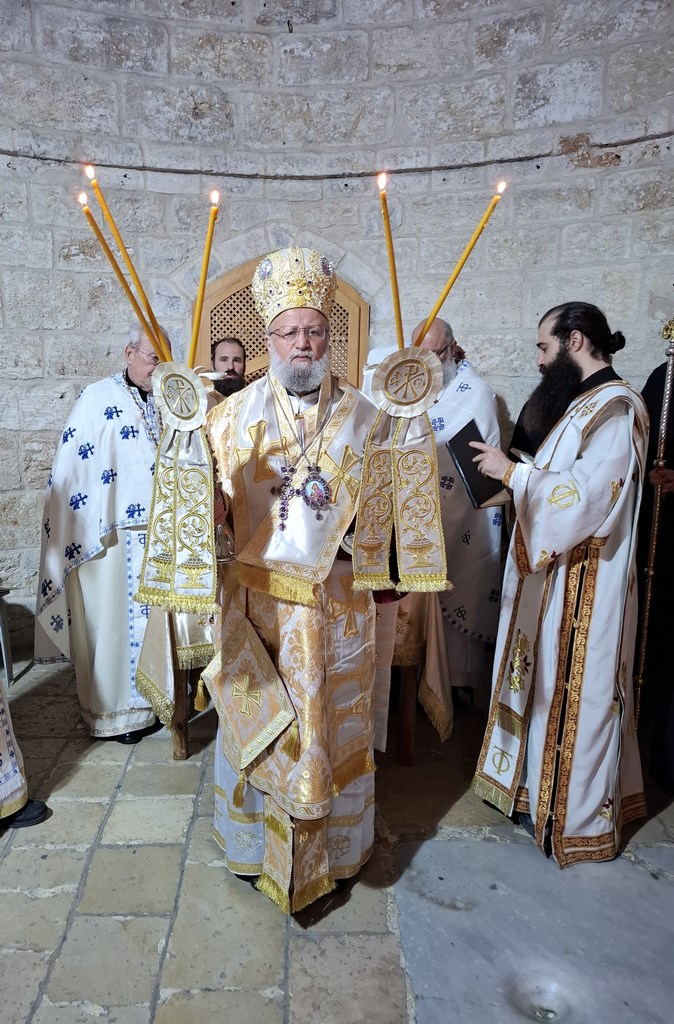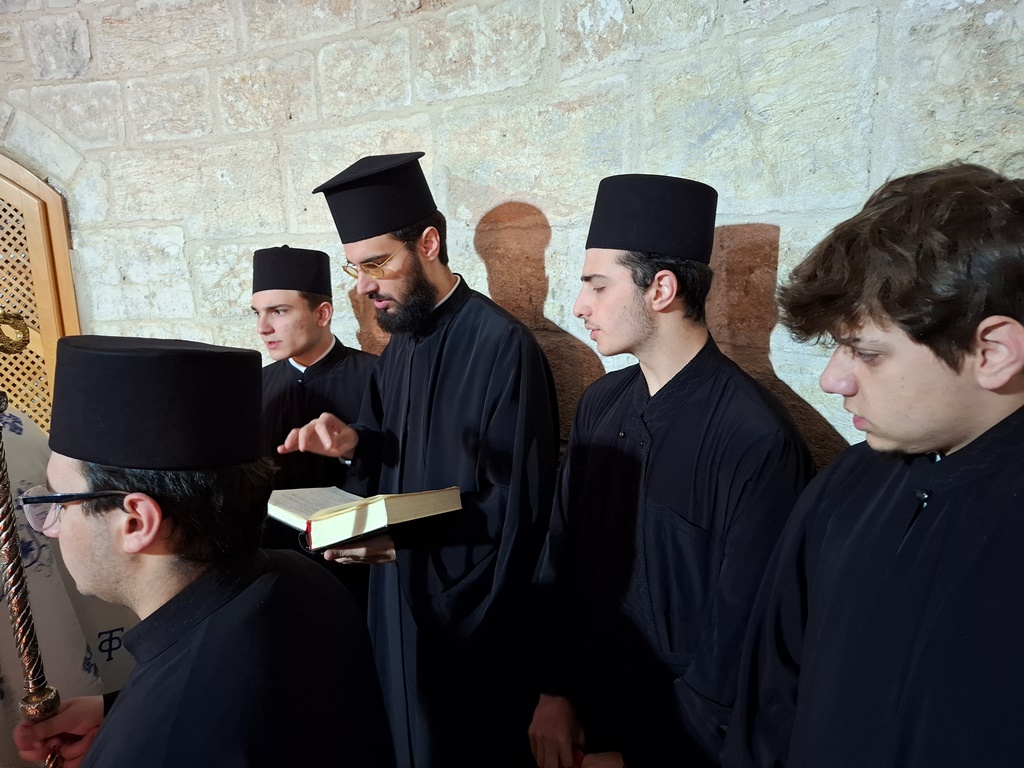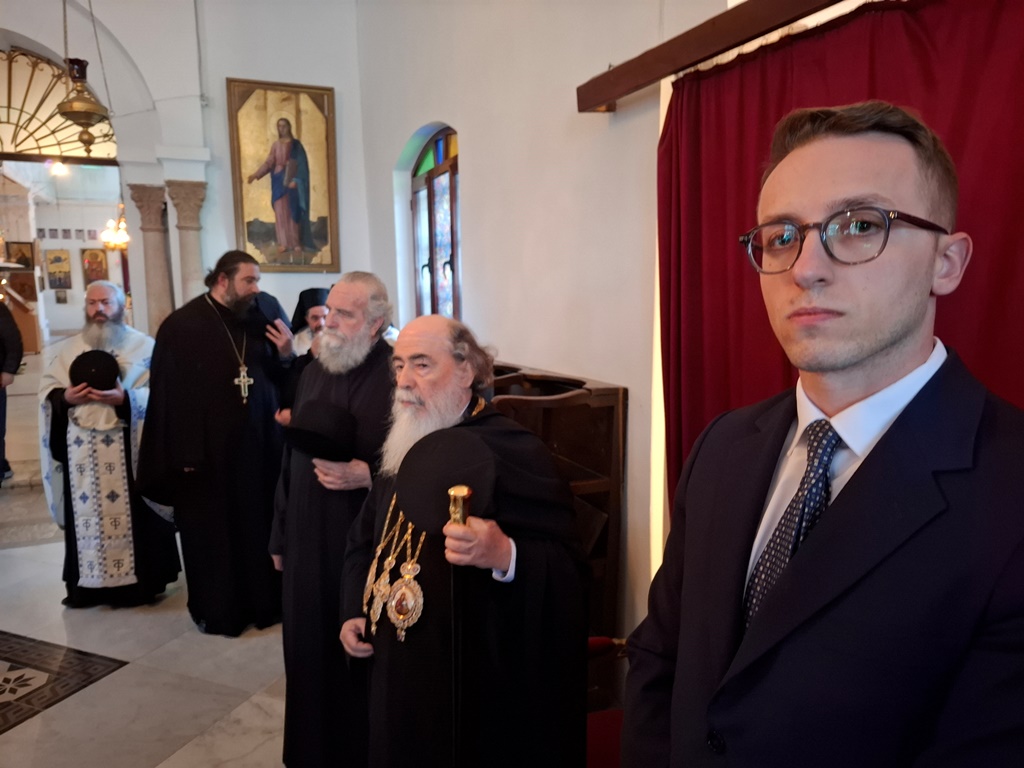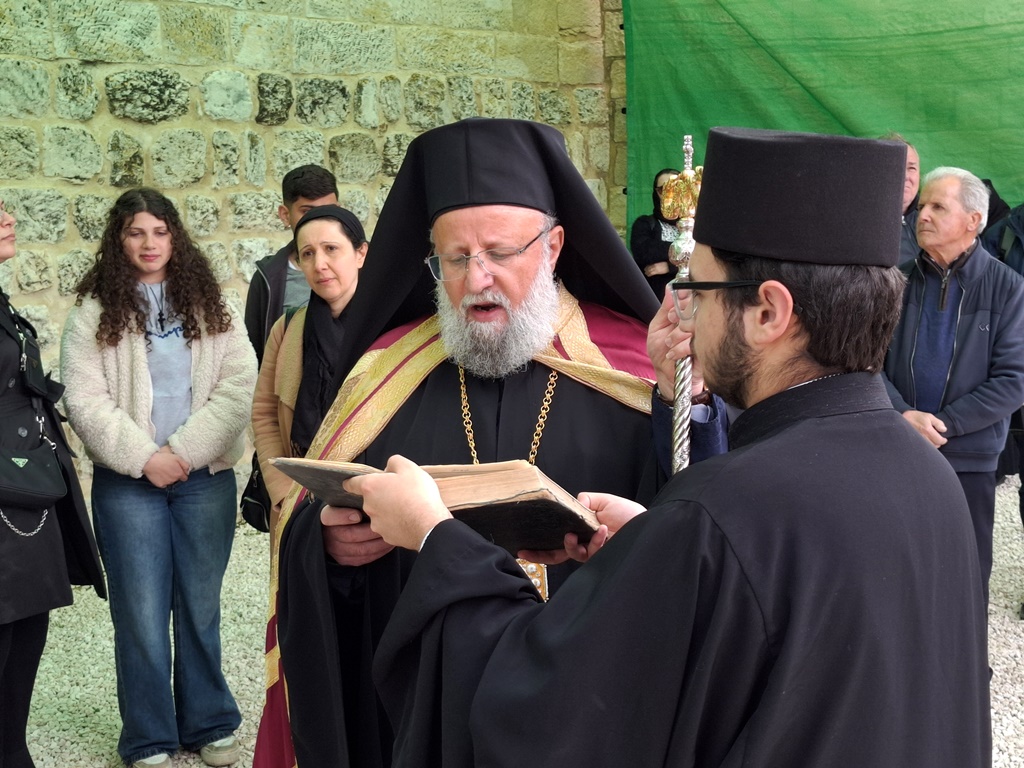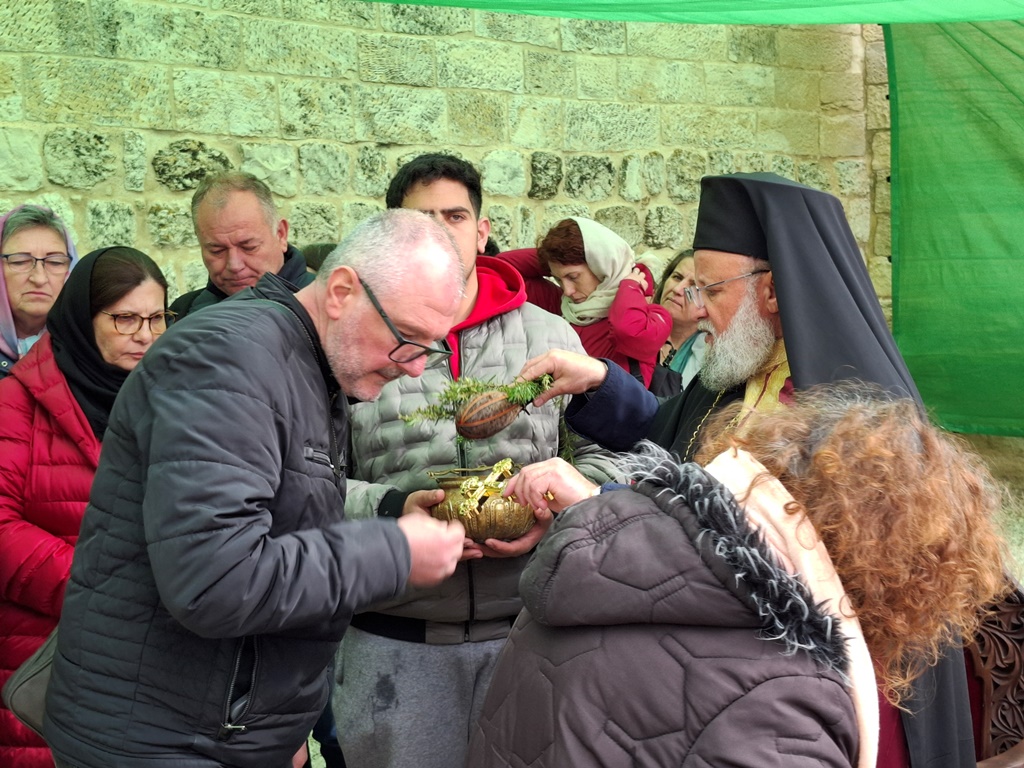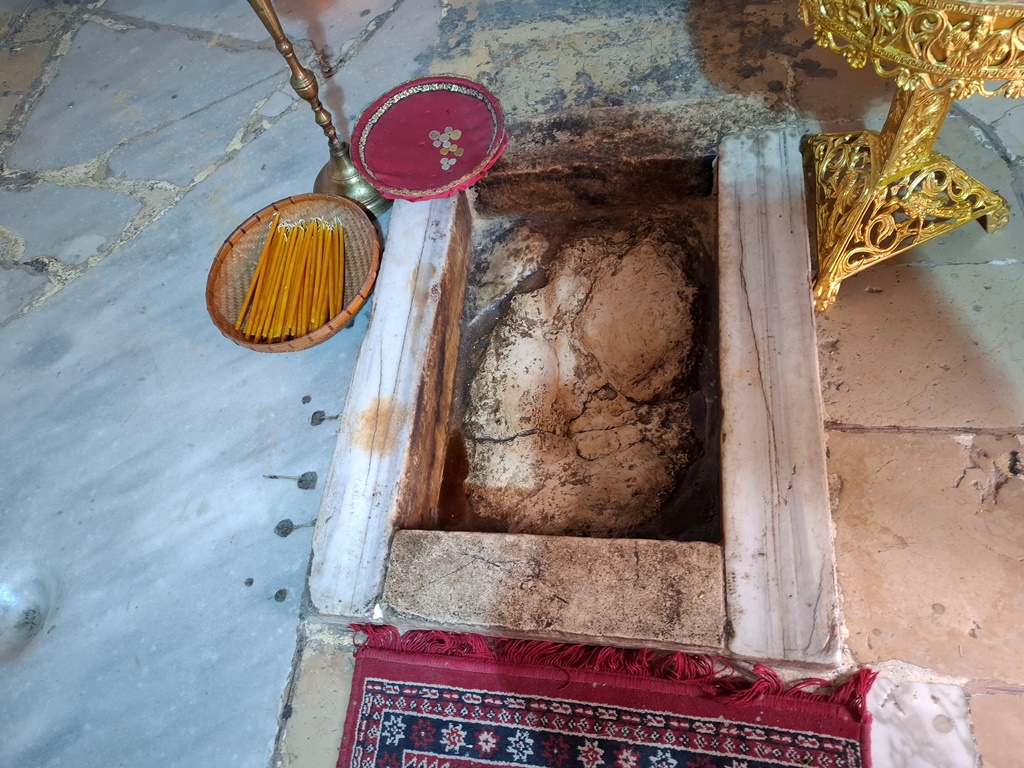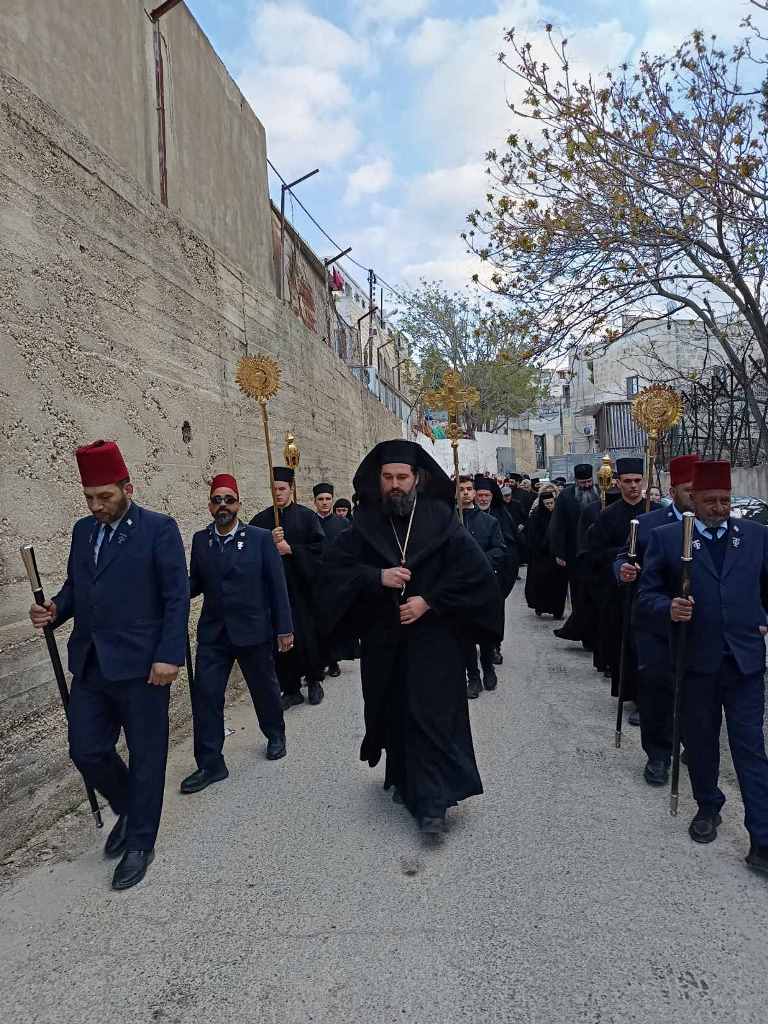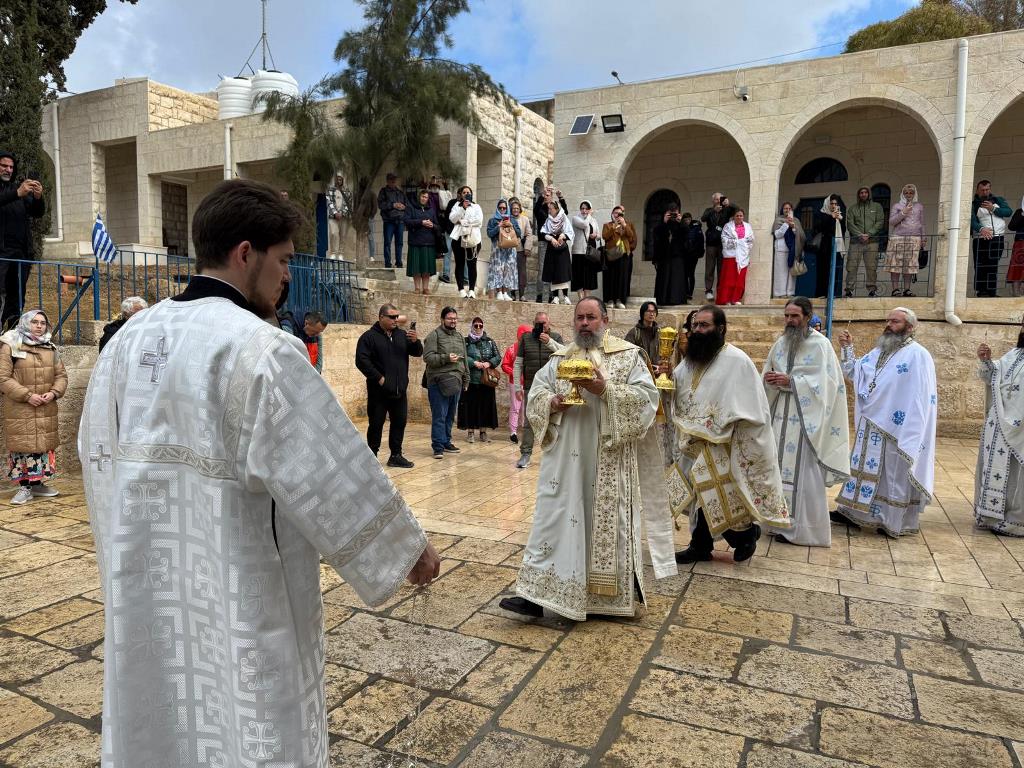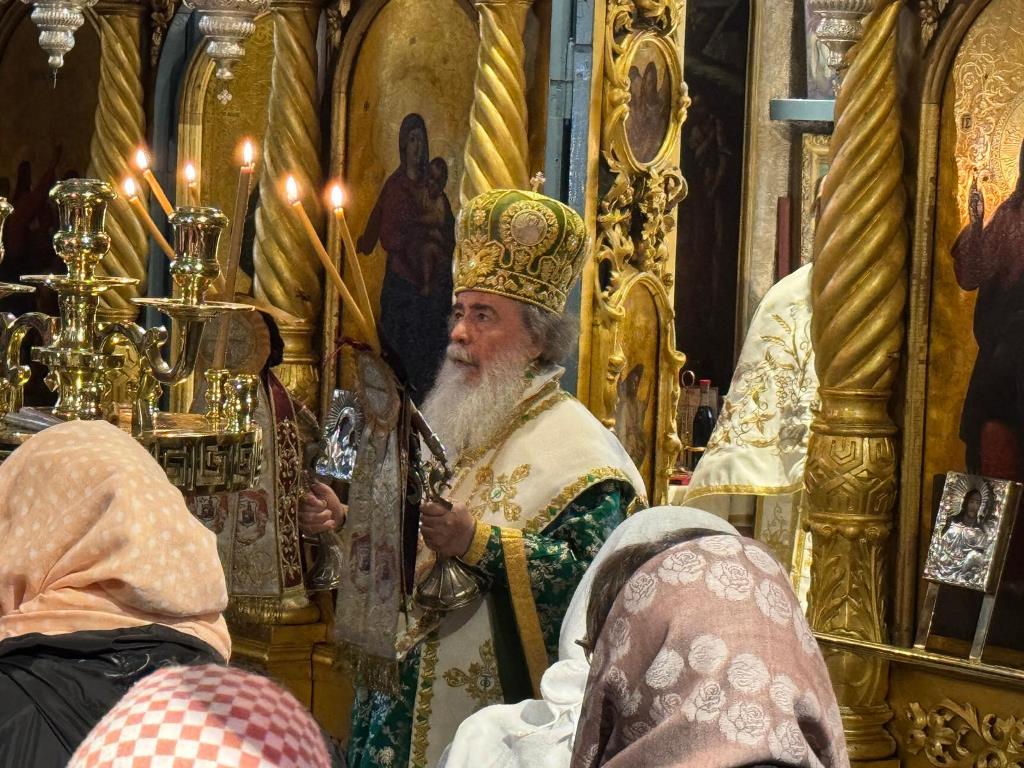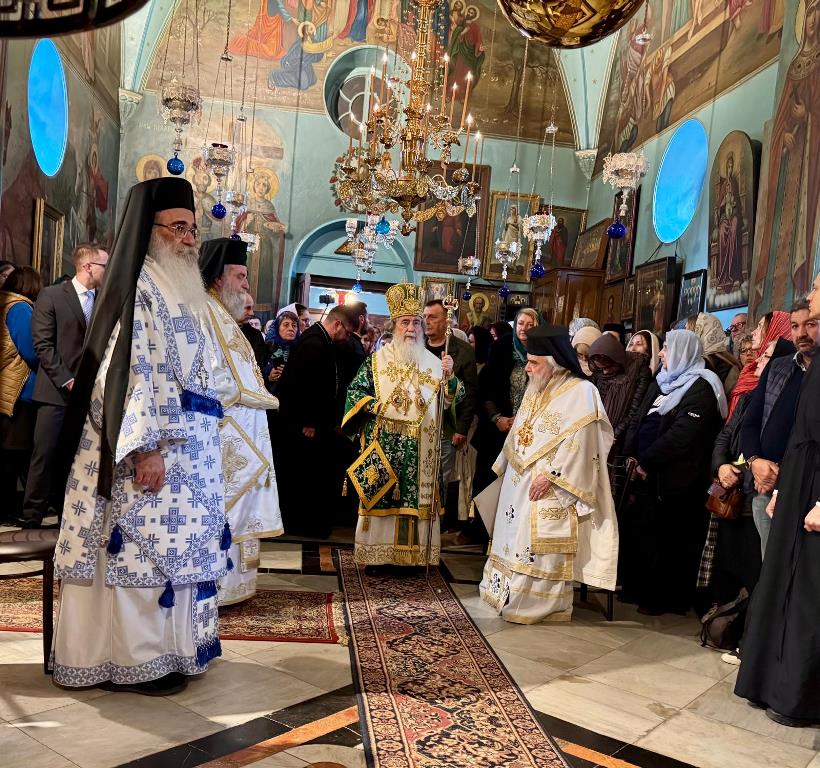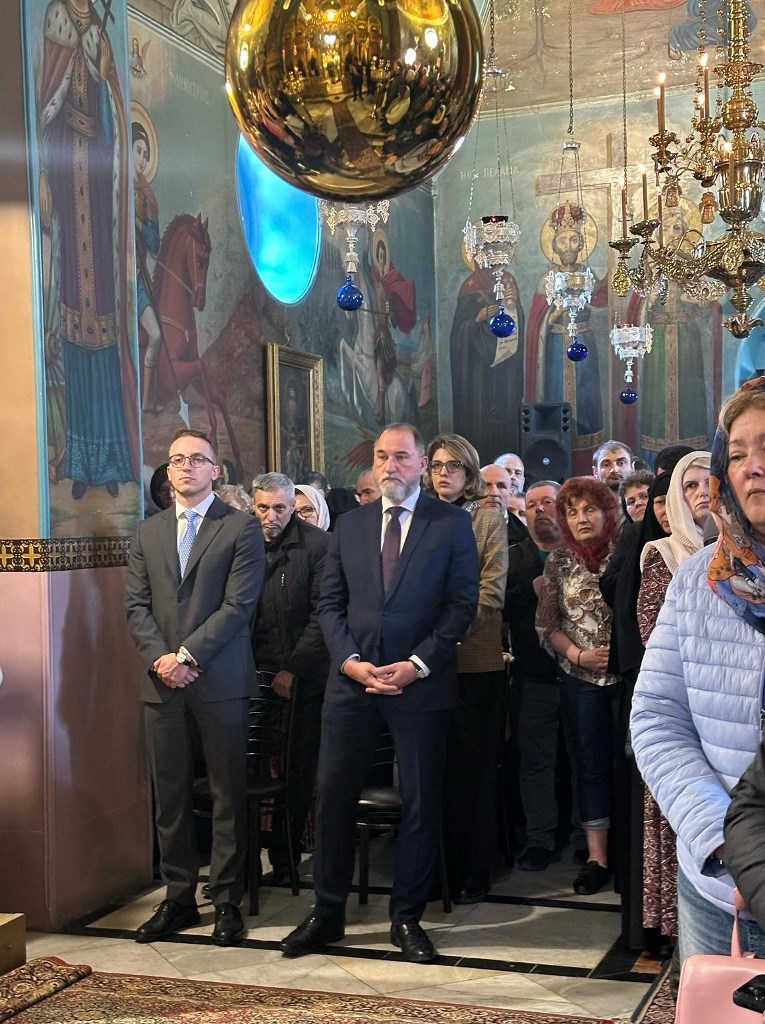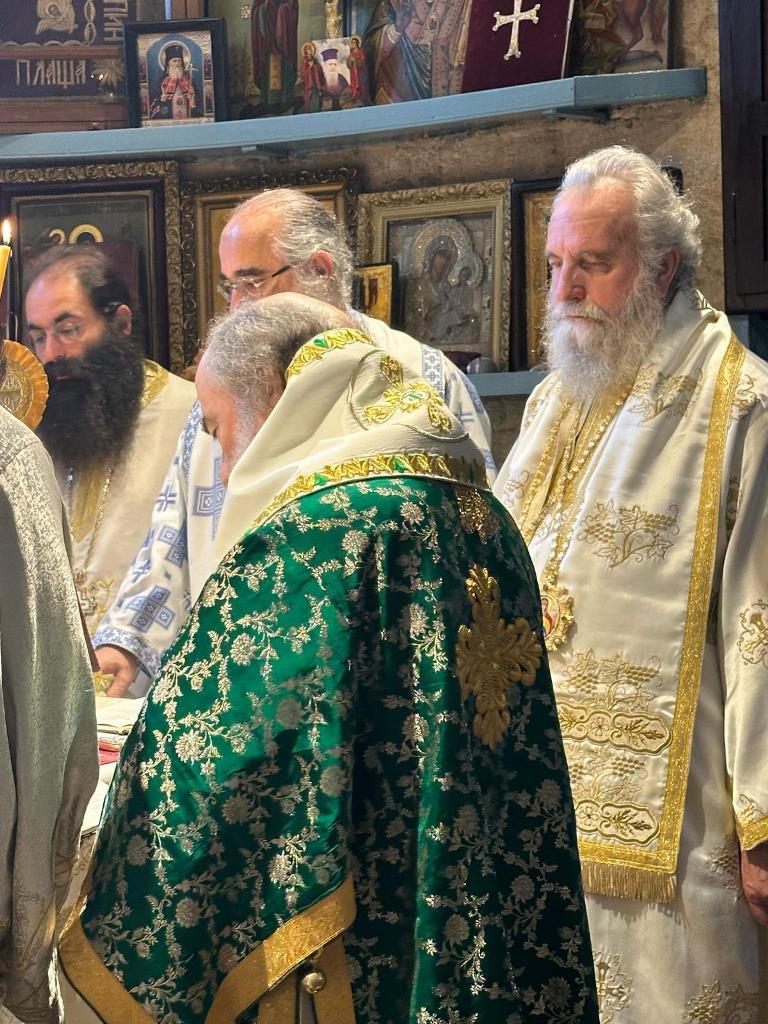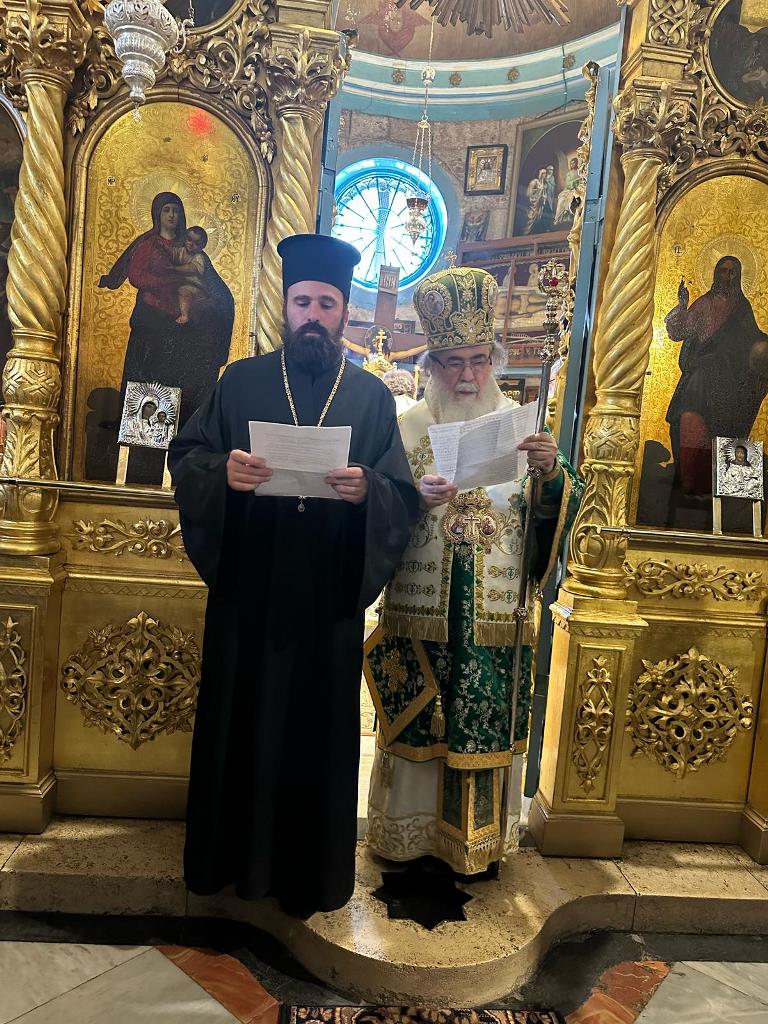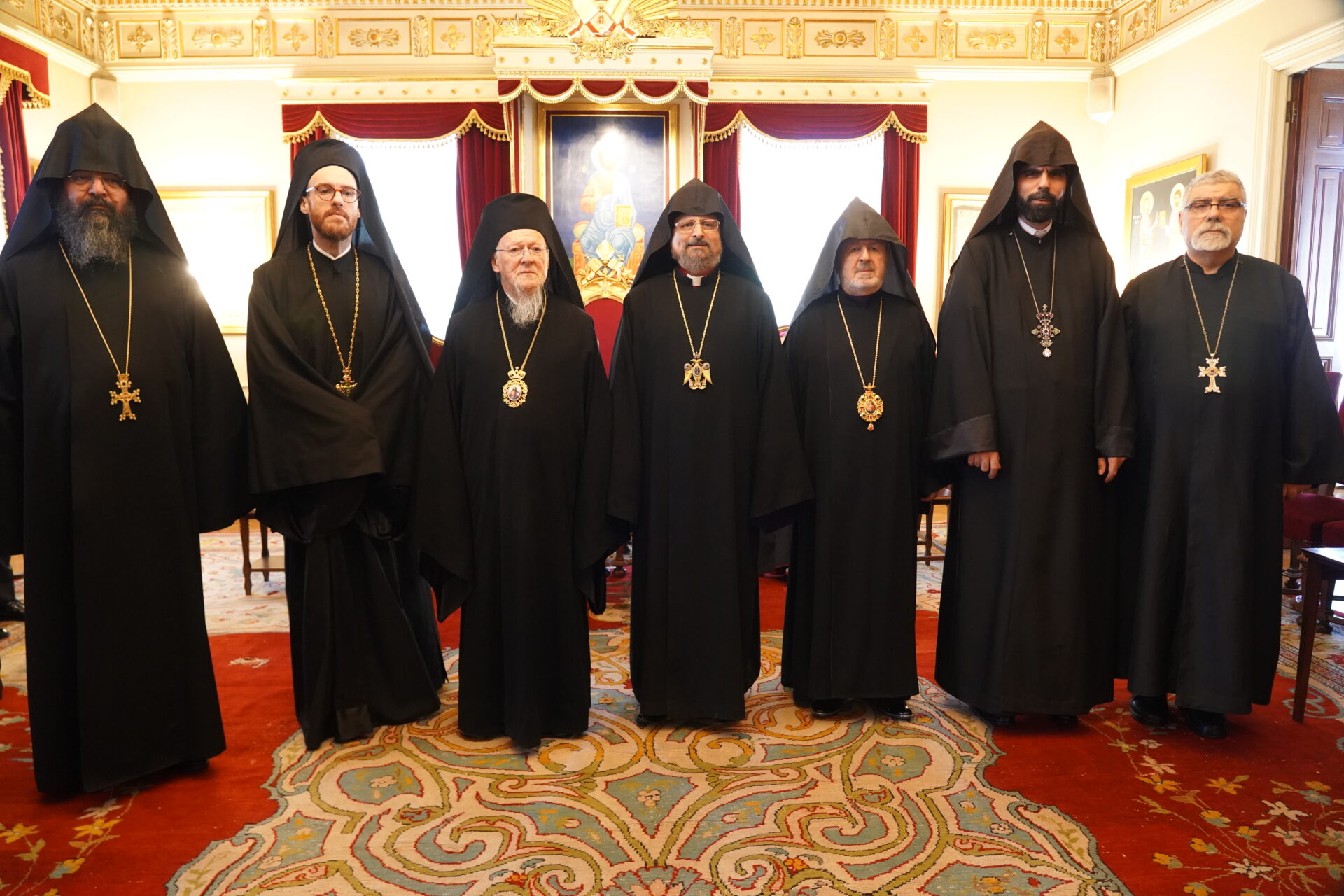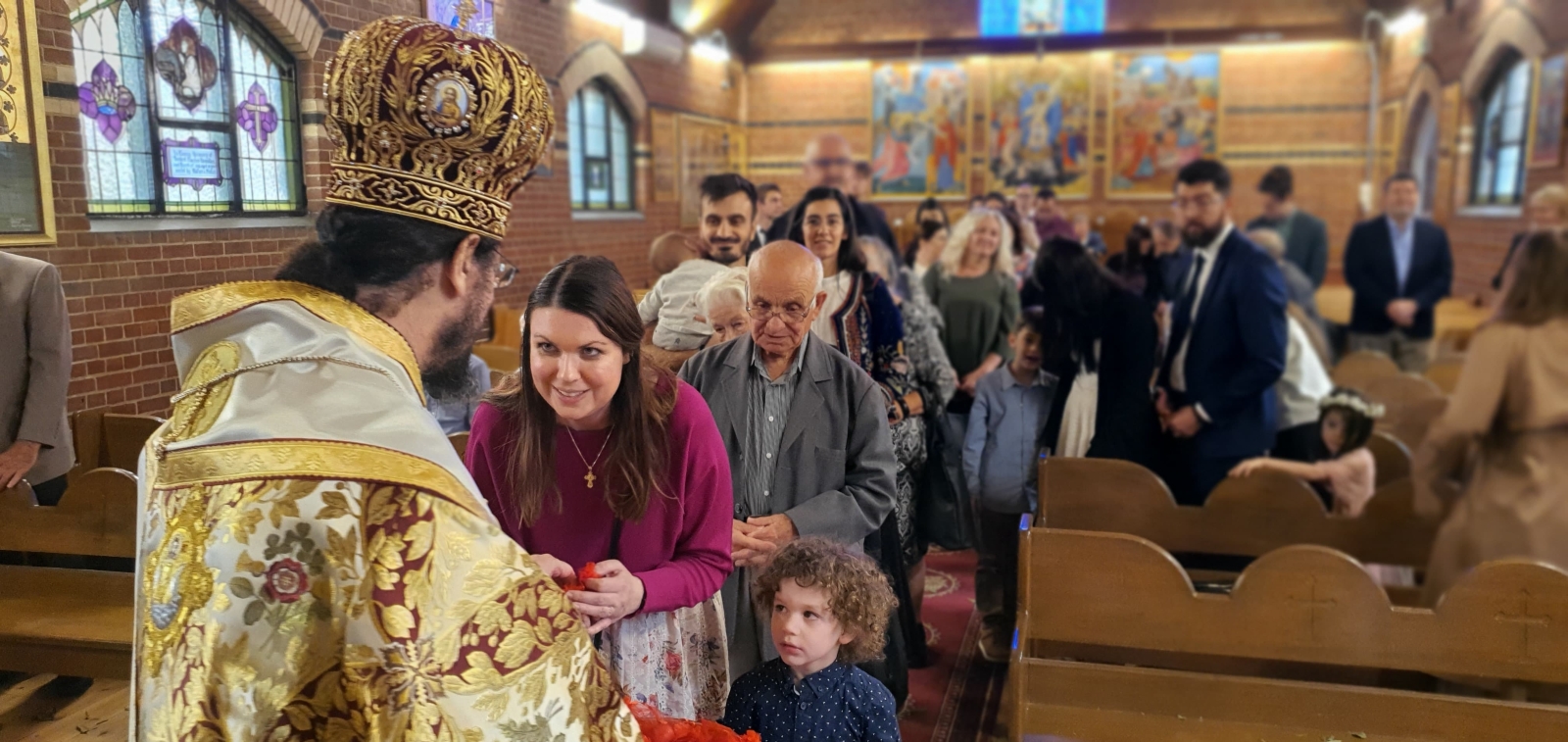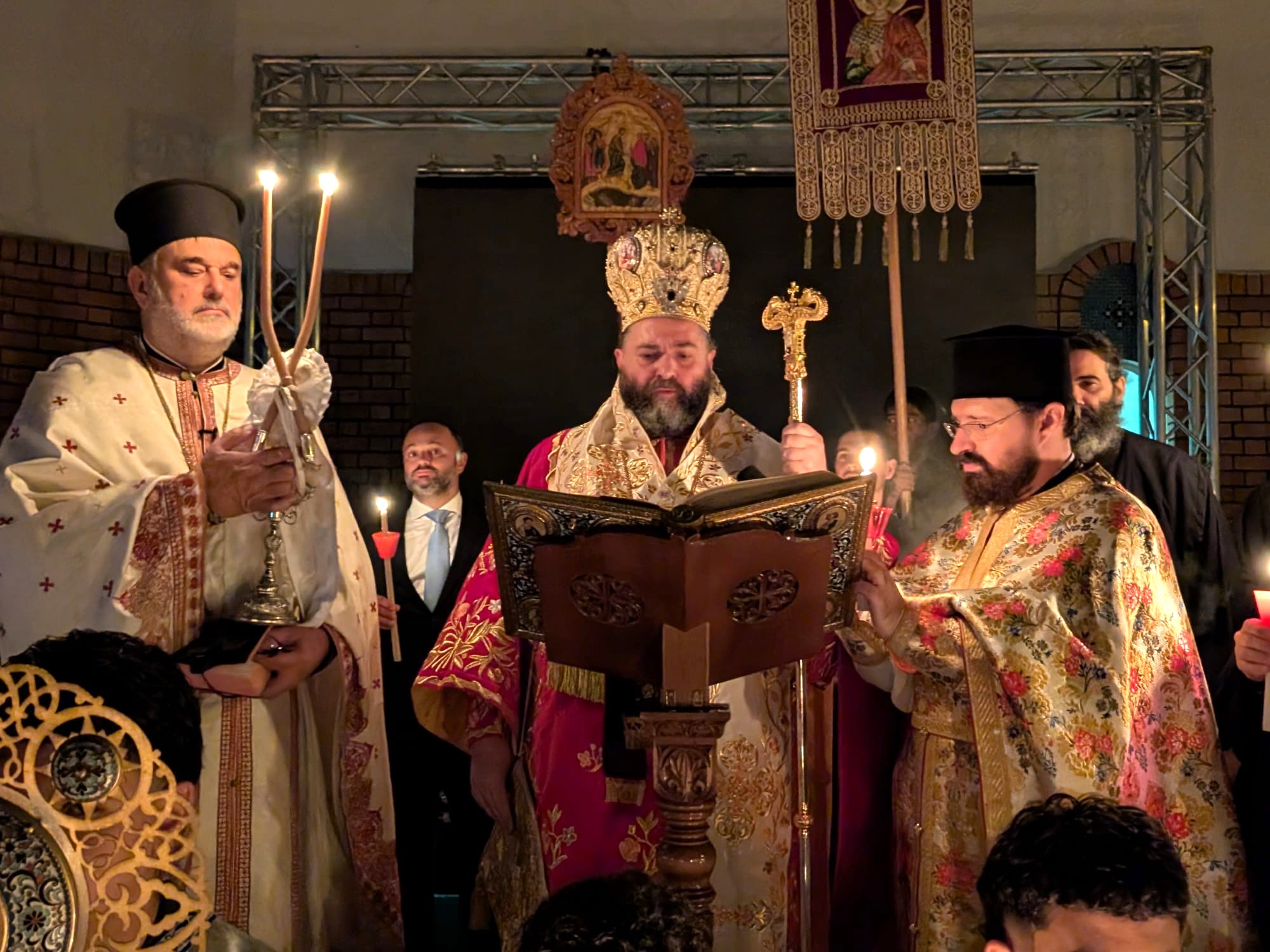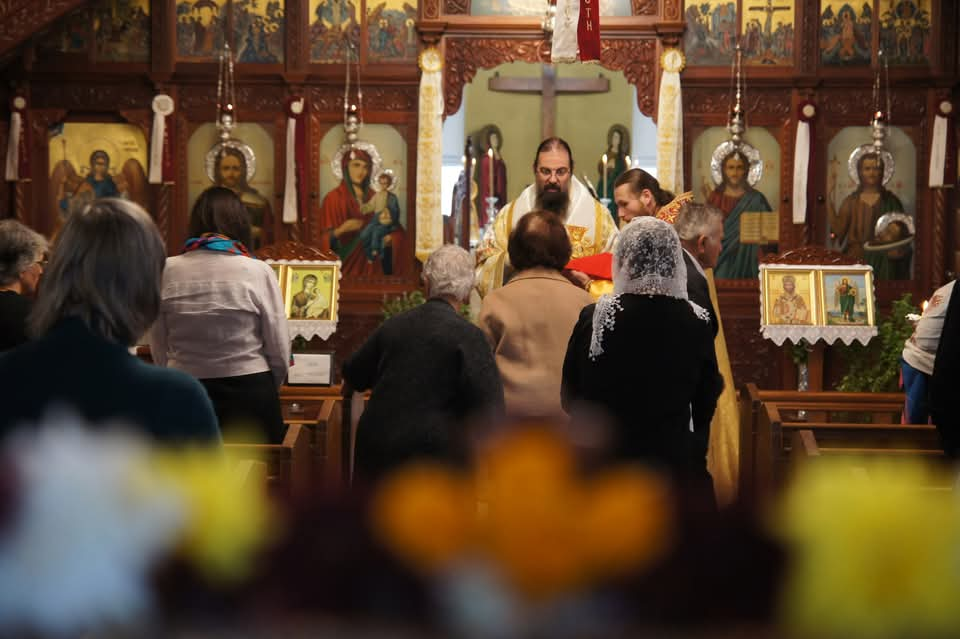Patriarchate of Jerusalem: The Celebration of the Resurrection of Lazarus
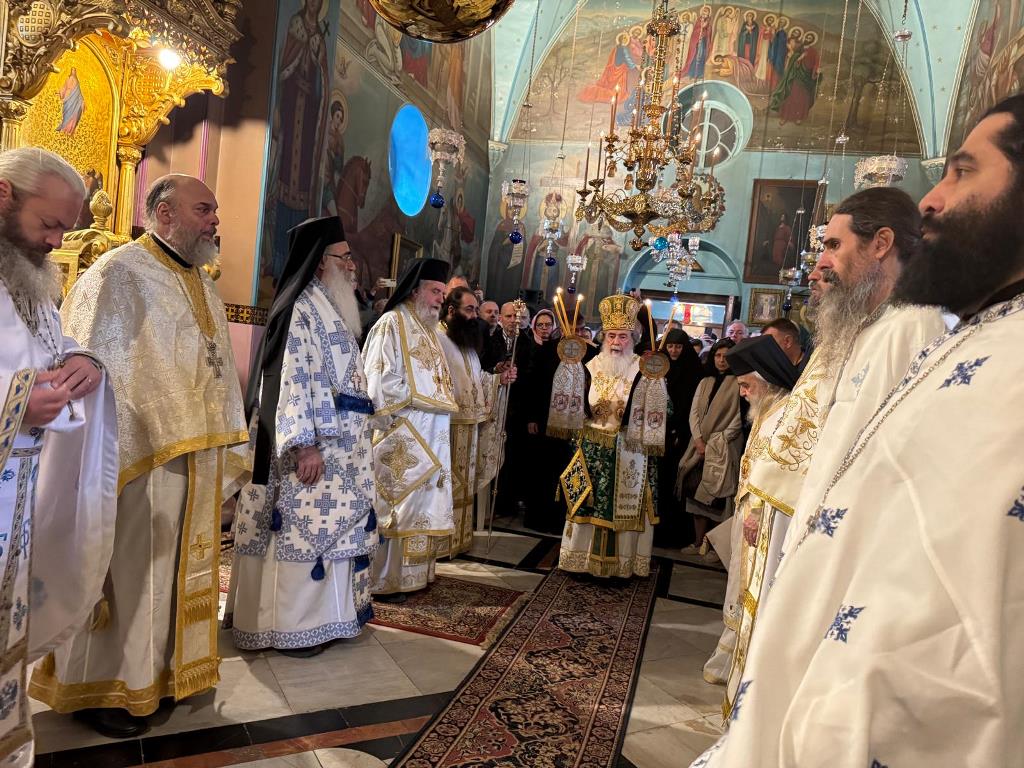
On Saturday, the 30th of March / 12th of April 2025, the Saturday of Lazarus, the Patriarchate celebrated the commemoration of the raising of the holy and righteous friend of the Lord, Lazarus, from the dead by our Saviour, per the account of the Evangelist John (John 11:1-46). The Lord, who loved Lazarus dearly, wept at his tomb in Bethany before raising him from the dead, thereby “foreshadowing our common resurrection before His Passion”.
This event was celebrated:
- In Bethany
At the women’s Holy Monastery of the sisters of Lazarus, Martha and Mary in Bethany, through the service of Vespers on the eve and the Divine Liturgy on the feast day, presided over by His Beatitude Patriarch Theophilos III of Jerusalem. Concelebrating with His Beatitude were Their Eminences: Metropolitan Isychios of Kapitolias, Archbishop Aristarchos of Constantina, and Archbishop Aristoboulos of Madaba, along with the Hieromonks of the Holy Sepulchre Brotherhood—Epiphanios and Christodoulos—as well as the representative of the Patriarchate of Moscow, Archimandrite Vassianos and other Orthodox Churches, Archdeacon Mark and Hierodeacon Eulogios. The service was chanted by Hierodeacon Simeon and Monk Iosif.
The Consul General of Greece in Jerusalem, Mr Dimitrios Angelosopoulos, was also in attendance, along with a large congregation of faithful pilgrims from many Orthodox Christian countries.
To this devout congregation, His Beatitude preached the divine word in Greek, saying:
“Today, Bethany proclaimeth beforehand the Resurrection of Christ, the Life-giver, dancing with joy at the raising of Lazarus. He who is incomprehensible in His divine nature, being circumscribed in the flesh, cometh to Bethany as a man, and, O Master, Thou weepest for Lazarus. But as God, of Thine own will, Thou raisest him that had lain in the tomb four days” (Triodion, Saturday of Lazarus, Matins, Ode 1, Troparion 4, Ode 2, Troparion 5).
Beloved brethren in Christ,
Devout Christians and pilgrims,
The Grace of the Holy Spirit hath gathered us all from the ends of the earth in this holy and venerable place of pilgrimage, in the homeland of Lazarus, Bethany, that we may celebrate the common resurrection which precedes the Passion of our God and Saviour, namely, the raising of the holy and righteous friend of Christ, Lazarus the Four-days-dead.
As the Evangelist John the Theologian testified, at that time: “Now a certain man was sick, named Lazarus, of Bethany, the town of Mary and her sister Martha. (It was that Mary who anointed the Lord with ointment, and wiped his feet with her hair, whose brother Lazarus was sick.)
Therefore, his sisters sent unto him, saying, Lord, behold, he whom thou lovest is sick.
When Jesus heard that, he said, This sickness is not unto death, but for the glory of God, that the Son of God might be glorified thereby” (John 11:1–4, KJV).
Interpreting these sacred words, the God-bearing Fathers of the Church explain:
Saint Ammonius declares: “For it was not as great a marvel and sign of glory to heal Lazarus from his illness, as it was to raise him from the dead.”
Saint Cyril of Alexandria notes: “If the Lord Himself said that the sickness of Lazarus was not unto death, yet death did occur, there is nothing strange in this.
For we look not at what happened in the interval, but at the end to which the matter led.
The Lord willed to manifest the weakness of death in the face of divine power, and to show that the outcome would be for the glory of God, that is, His own glory.”
Or, in simpler terms: If the Lord said that the illness of Lazarus was not unto death, even though death occurred, there is nothing unusual in this. For we examine not what happened in the meantime, but the ultimate purpose.
And that purpose was for the Lord to show that death is weak and powerless, and that the raising of Lazarus occurred for the glory of God—namely, the glory of Christ Himself.
This very truth is proclaimed by the hymnographer of the Church, who exclaims:
“Confirming the general resurrection before Thy Passion,
Thou didst raise Lazarus from the dead, O Christ our God.
Wherefore, we also, like the children, bearing the symbols of victory,
cry unto Thee, the Conqueror of death:
Hosanna in the highest,
Blessed is He that cometh in the name of the Lord.”
(Lazarus Saturday Troparion)
In other words, beloved brethren, our Lord Jesus Christ came to Bethany with His disciples six days before the Passover, to recall—that is, to restore—His friend Lazarus, who had been dead four days, and to declare beforehand His own Resurrection. As He said: “I am the resurrection, and the life: he that believeth in me, though he were dead, yet shall he live: And whosoever liveth and believeth in me shall never die” (John 11:25–26, KJV).
The Resurrection of the Lord is the chief cornerstone of the building of Christ’s Church and of our unalterable Orthodox faith. As the Holy Apostle Paul bears witness, proclaiming and saying: “But if there be no resurrection of the dead, then is Christ not risen: And if Christ be not risen, then is our preaching vain, and your faith is also vain”
(1 Corinthians 15:13–14, KJV).
The Risen Christ is the Fulfilment of Sacred History, the fulfilment, that is, of the Mosaic Law and the Prophets. Therefore, bearing branches of olive and palm with thanksgiving, let us cry aloud with the hymnographer: “As Thou didst enter, O Lord, into the Holy City, seated upon a colt, Thou didst make haste to go to Thy Passion, that Thou mightest fulfil the Law and the Prophets. And the children of the Hebrews, foretelling the victory of the Resurrection, met Thee with branches of palm and olive, crying: Blessed art Thou, O Saviour, have mercy on us” (Vespers, Entreaty, Troparion 4).
May He also grant unto us, and unto our region afflicted by the present conflict, that peace which passeth all understanding (cf. Philippians 4:7). Amen. Many happy returns, and a blessed Pascha to all!”
After the Divine Liturgy, and despite the unfavourable weather conditions, a procession took place to the Tomb of Lazarus, presided over by His Eminence, Archbishop Aristoboulos of Madaba. There, the Gospel narrative according to Saint John concerning the raising of Lazarus was read aloud (John 11:1–44), and a supplication was offered.
This was followed by a visit to the nearby Bethany Town Hall, and finally, a festive meal was offered at the Holy Monastery of Martha and Mary, prepared by the Abbess, Nun Metrodora, together with the sisters of the Monastery.
2. On the Mount of Olives
On the eve of the feast, Vespers, the Small Compline, and the Holy Procession were celebrated at the Holy Shrine of the Ascension, followed by a procession to the Monastery of the Men of Galilee, presided over by His Eminence Archbishop Philoumenos of Pella. His Eminence was received by His Beatitude, our Father and Patriarch of Jerusalem, Theophilos III, together with the Patriarchal Commissioner, His Eminence Metropolitan Isychios of Capitolias, and the Consul General of Greece in Jerusalem, Mr Dimitrios Angelosopoulos.
On the morning of Lazarus Saturday, the feast day itself, the Divine Liturgy was celebrated in accordance with the Status Quo at the site of the Ascension of our Saviour Jesus Christ, within the holy site itself, due to the rain. The service was presided over by His Eminence, concelebrated by the Elder Kamarasis, Archimandrite Nektarios, Archimandrite Claudius, the priests Nektarios and George, and Hierodeacon Dositheos.
The chanting was led by the chief cantor of the Church of the Resurrection, Deacon Eustathios, together with students from the Patriarchal School of Zion (in Greek) and the choir of the Cathedral of Saint James the Brother of the Lord (in Arabic). Participating also were a few local faithful and pilgrims.
Following the Divine Liturgy, the Episcopal entourage was received by the Supervisor and Renovator of the Monastery of the Ascension—situated opposite the holy site—Monk Achillios.
From the General Secretariat
Source: Patriarchate of Jerusalem
